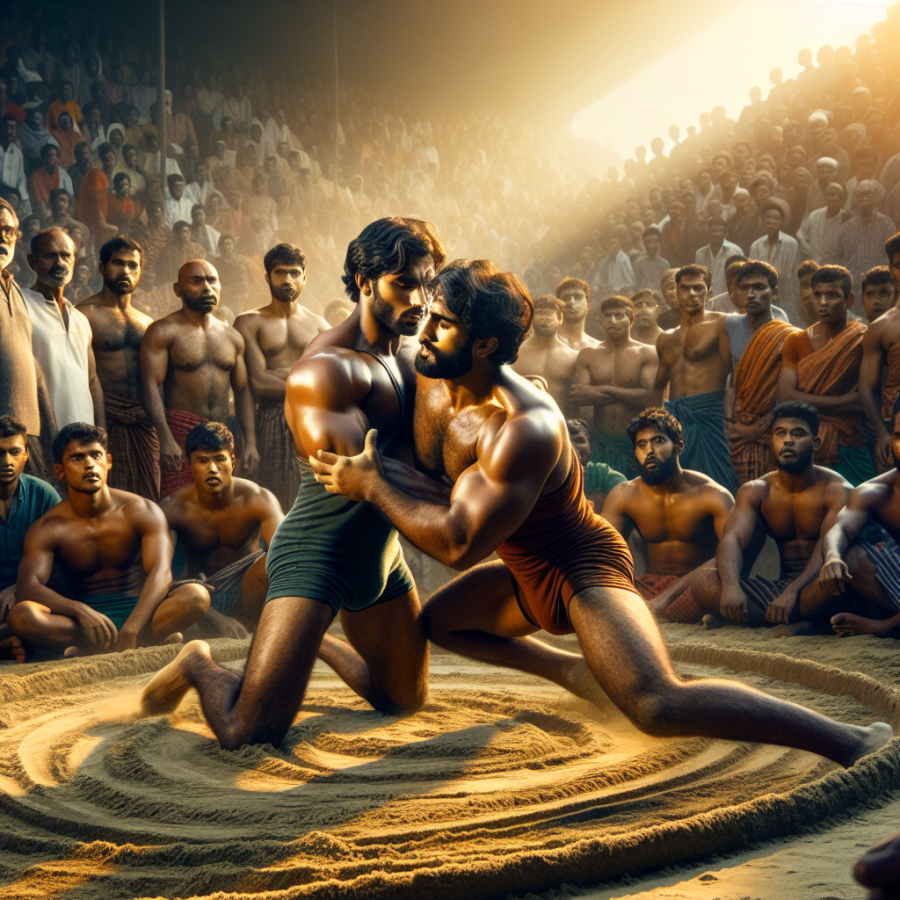Exploring the Rich History of Boli Khela in Bengali Culture
Boli Khela, an age-old form of wrestling distinct to the Bengali culture, is a sport that exemplifies strength, skill, and valor. Its name derived from the Bangla words 'Boli,' meaning wrestler, and 'Khela,' which means game or sport, Boli Khela holds a special place in the heart of the Bengali community and its rich cultural tableau.
This traditional form of wrestling is not just a display of physical prowess but also a social event that brings together communities, transcending the boundaries of caste, creed, and economic status. Originating in the early 20th century in the Chittagong division of what is now Bangladesh, Boli Khela was first organized by Abdul Jabbar Saodagar in order to encourage the youth to develop their physical capabilities and attend to their fitness.
The history of Boli Khela is deeply intertwined with regional festivals, primarily occurring during the Bengali month of Baishakh, which marks the advent of the Bengali New Year. During these festivals, wrestlers from various districts and sometimes from neighboring countries gather to participate in this highly-anticipated and spirited competition.
Tracing its roots, one finds that Boli Khela stems from both indigenous practices of wrestling and the influence of colonial military training. The style adapted by the locals combined the techniques of traditional wrestling with those observed from British soldiers stationed in the region during the colonial period.
The rules of Boli Khela are simple and designed to ensure fairness and the display of true skill. Wrestlers are matched based on their weight and experience, and bouts are fought within a marked boundary. The objective is for a wrestler to pin their opponent's shoulders to the ground—a feat that requires not only strength and technique but also intelligence and quick thinking.
Over the years, the sport has produced legendary wrestlers who have attained near-mythical status within the community. Names such as Jabbar Boli, Ali Boli, and Rahim Boli resonate as champions who not only competed with great prowess but also personified the spirit of Boli Khela.
The wrestlers, or 'Bolis,' have traditionally been local heroes, revered not just for their physical abilities but also for their moral strength and adherence to fair play. The rigorous training regimen and discipline required to excel in Boli Khela are considered to be formative experiences that shape the characters of the 'Bolis,' embedding values such as respect, honor, and sportsmanship.
Read also:
Mastering the Art of Limited Overs Cricket Strategy
The Techniques and Rituals Behind the Excitement of Boli Khela Wrestling Events
Boli Khela, a form of traditional wrestling originating from the Bengal region, captivates audiences with its unique blend of physical prowess and cultural rituals. Unlike other forms of wrestling, Boli Khela is as much about the spectacle and ceremony as it is about the competition.
Before the matches begin, wrestlers, known as 'pehlwans' in the local parlance, engage in specific routines to prepare for the contest. A key aspect of these routines is the application of oil. Wrestlers generously anoint their bodies with oil, which serves a dual purpose. Firstly, it makes the wrestlers' bodies supple and flexible, preparing their muscles for the intense physical activity ahead. Secondly, the oil makes it more difficult for opponents to grip, adding an extra challenge to the grappling techniques.
The wrestling pit is another central element of Boli Khela. It is not just any patch of ground but is carefully prepared beforehand, often consisting of soft earth or clay, which reduces the risk of injury during falls and throws. The preparation of the pit is a ritual in itself, with organizers and older wrestlers paying close attention to its consistency and texture, ensuring that it meets the requirements of the sport.
The attire of the wrestlers is minimal, with participants traditionally wearing only a pair of shorts or a loincloth. This attire is steeped in tradition and purpose, allowing for maximum freedom of movement while also paying homage to the historical aspects of the sport.
Music and drumbeats are ubiquitous at Boli Khela events, creating an atmosphere of exhilaration and anticipation. The rhythms act as a motivator for the wrestlers and a signal for the audience that the contest is about to begin. These sounds mesh with cheers and calls from the crowd, underscoring the communal nature of the event and its roots in village tradition.
Before the matches, senior wrestlers or 'ustads' often lead a procession, parading around the pit, a practice known as the 'jatra'. This is followed by the 'malla-yuddha' or the 'wrestlers' duel' where each participant showcases strength and skill in a bid to intimidate their opponent and impress the onlookers. This pre-match display contextualizes the upcoming bouts within the framework of strength, honor, and tradition.
Once the wrestling begins, it's a test of both skill and endurance.




